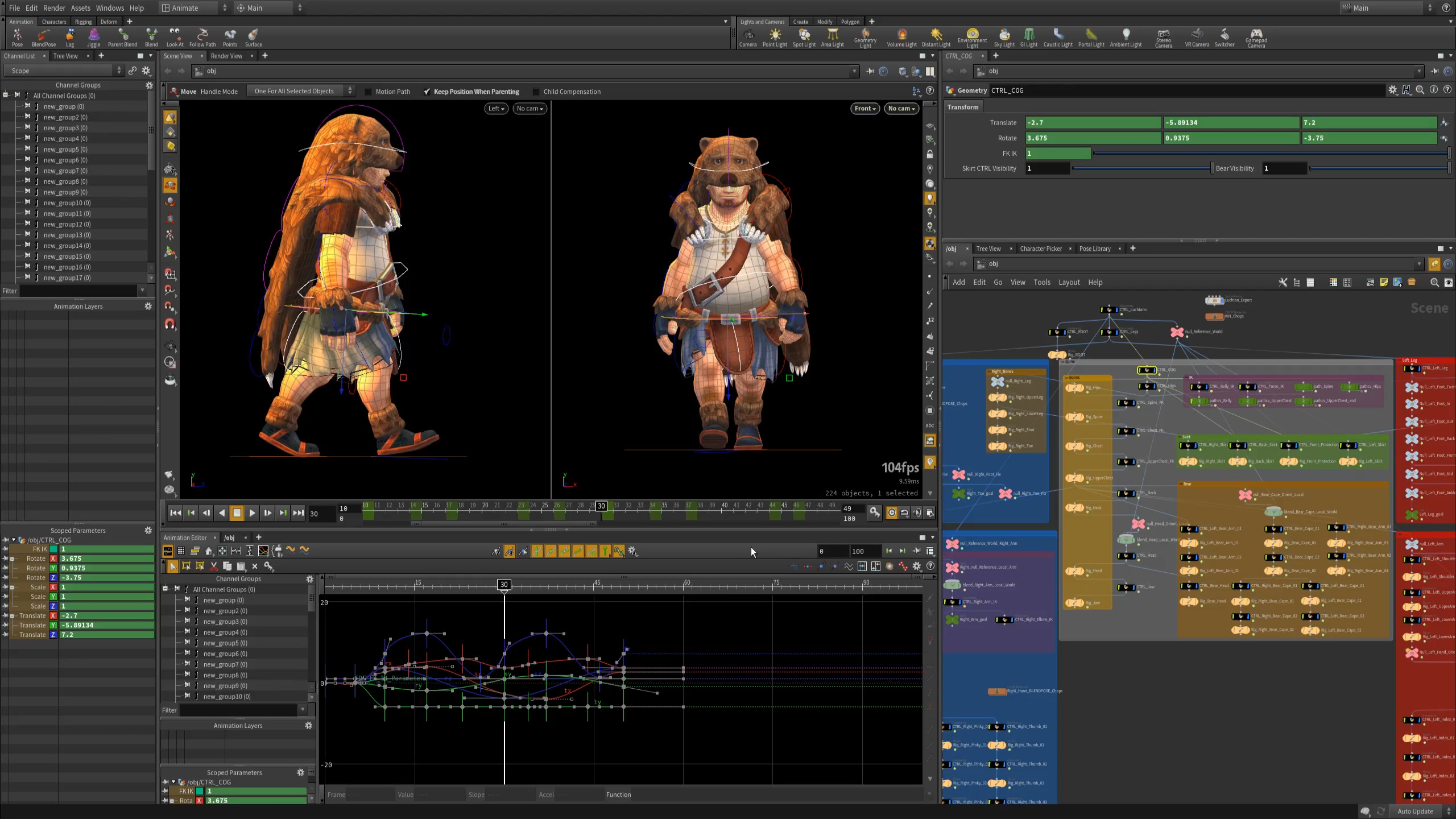Summary
SideFX Houdini is one of the most powerful and innovative 3D animation and visual effects software tools in the industry, recognized globally for its procedural generation capabilities and flexibility in creating complex visual environments. Developed by SideFX, a company with decades of expertise in visual effects technologies, Houdini stands as a cornerstone in film production, game development, and motion graphics design. Its node-based procedural system allows artists to create stunning simulations, realistic environments, and breathtaking visual sequences with an efficiency unmatched by traditional 3D tools.
Houdini’s power lies not just in the quality of its output but also in its workflow efficiency, which enables studios to achieve large-scale creative results without massive manual intervention. From blockbuster films to high-end commercials, SideFX Houdini has proven to be an essential tool for studios that demand both creativity and control.
The Foundation of Houdini: Procedural Workflow and Flexibility
The defining feature of Houdini is its procedural workflow, which allows artists to generate content through interconnected nodes representing every step of the creation process. This system provides full control over modeling, animation, simulation, and rendering, making it possible to modify complex scenes without starting from scratch. For instance, a change made to a single parameter in a node can automatically propagate through the entire network, updating the result dynamically.
This non-destructive approach saves countless hours during production, allowing creative teams to iterate faster and explore variations easily. The flexibility of Houdini’s procedural system also makes it ideal for creating complex effects such as explosions, fire, smoke, and fluid simulations, which are often used in modern cinematic productions. Unlike traditional modeling tools that rely on manual adjustments, Houdini’s procedural nodes enable scalable creativity where every element is controlled mathematically, ensuring both consistency and realism in large-scale scenes.
Modeling and Animation Powerhouse
Houdini’s modeling tools combine procedural and direct modeling approaches, giving artists total freedom to design objects ranging from simple geometry to complex architectural structures. Its parametric modeling capabilities allow users to adjust and reshape designs at any stage without losing data or breaking the workflow. This flexibility is vital for environments where precision and adaptability are key, such as in film previsualization or game-level design. Animation in Houdini also benefits from procedural systems, offering robust tools for rigging, keyframing, and motion control. Artists can create character animations, particle-based movements, or mechanical rigs while maintaining full control through node networks.
This approach ensures that every motion remains editable and customizable throughout the production cycle. Whether it’s a dynamic creature animation or a subtle environmental movement, Houdini delivers unmatched accuracy and fluidity, supported by its integrated physics-based simulation systems that bring natural realism to animated sequences.
Dynamics and Simulations at a Cinematic Level
When it comes to dynamics and simulations, Houdini leads the 3D industry with its physically accurate solvers and procedural data handling. The software includes specialized simulation engines for particles, fluids, cloth, smoke, fire, rigid bodies, and soft-body dynamics, each capable of interacting with one another seamlessly. Houdini’s Pyro FX, for example, allows for the realistic simulation of explosions, fire, and smoke with detailed volumetric control. Similarly, FLIP Fluids provide lifelike liquid simulations suitable for everything from a dripping faucet to massive ocean waves. The Vellum solver adds another layer of realism by enabling cloth, hair, and soft-body simulations that respond naturally to gravity, wind, and collisions.
Rendering and Lighting in Houdini
Rendering is one of the most crucial stages in visual production, and Houdini excels with its integrated renderer known as Karma, which is part of the Solaris environment. Karma supports both CPU and GPU rendering, providing flexibility and speed for high-resolution visual outputs. The software also offers full integration with RenderMan, Arnold, and Redshift, allowing artists to choose the rendering engine that best suits their pipeline. Houdini’s lighting tools provide a physically accurate lighting model, simulating how real-world light interacts with materials. Artists can easily adjust exposure, intensity, and global illumination to produce photorealistic effects.
The Power of VEX and VOP Networks
Houdini’s architecture is enhanced through VEX (Vector Expression Language) and VOP (VEX Operator) networks, which provide a scripting environment for customizing behavior at a granular level. VEX allows artists to write custom shaders, control particle behavior, and build unique procedural effects using a powerful yet efficient syntax. On the other hand, VOP networks offer a visual representation of these operations, enabling artists to manipulate complex logic without writing code directly. This dual approach ensures that both technical artists and creative designers can collaborate efficiently.
Game Development and Interactive Simulations
In the world of game development, Houdini has become a major tool for creating dynamic environments, procedural assets, and real-time effects. Game studios use Houdini to build terrain, foliage, and destructible environments that can be exported directly into Unreal Engine or Unity using the Houdini Engine plugin. This procedural generation approach ensures that artists can make global adjustments quickly without manually rebuilding assets. For example, altering a single parameter can reshape an entire landscape or adjust textures automatically.
The Future of Houdini and Its Impact on Digital Creation
SideFX continues to evolve Houdini with every release, pushing the boundaries of what is possible in digital content creation. The introduction of machine learning tools, GPU-based simulations, and improved USD workflows indicates a future where automation and creativity coexist seamlessly. The focus on performance, interoperability, and real-time processing ensures that Houdini remains a cutting-edge solution for visual effects, animation, and virtual production. As the entertainment and gaming industries continue to demand higher-quality visuals and faster turnarounds, Houdini’s procedural foundation will remain its greatest strength, offering infinite flexibility to adapt to new technologies and creative challenges. Ultimately, SideFX Houdini stands as more than just software; it represents a philosophy of limitless creativity driven by precision, control, and innovation.


